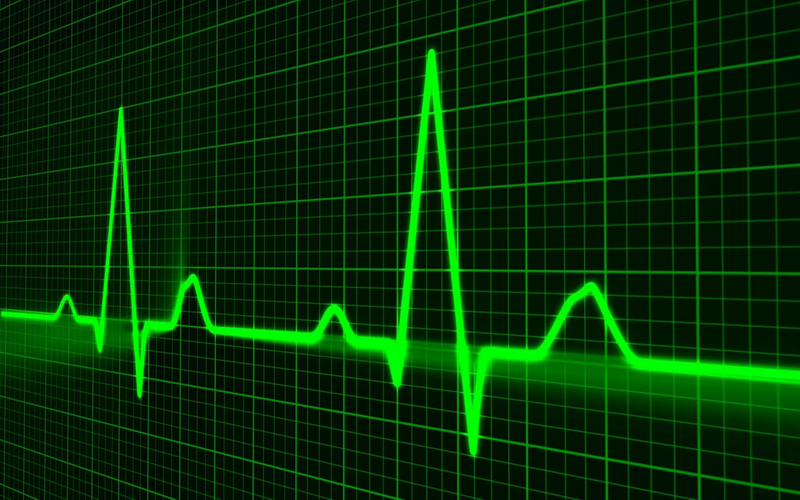Why Fit People Drop Dead
By Ainul Huda Mohamed Saaid
KUALA LUMPUR (Bernama) -- English league professional footballer Fabrice Muamba was a fit 23-year-old athlete when he suddenly collapsed on the field in the middle of a televised match in March 2012.
Muamba’s heart stopped for 78 minutes before it was revived.
Thanks to the medical team's fast action and a cardiologist who luckily happened to be on-site, Muamba was literally brought back to life.
Although he had to retire from professional football after the incident, nonetheless, his health recovered and he managed to live a normal life.
He now coaches youth football clubs and is married with two sons, and he had also joined a British dance show on television.
SUDDEN DEATH IN THE FIELD
What happened to Muamba was sudden cardiac arrest due to onset of rapid, erratic electrical rhythm in the heart, from an underlying pre-existing cardiac condition.
Such a condition can cause the heart to quiver uselessly, and rapidly lead to a flat line or death.
Sunway Medical Centre interventional consultant cardiologist Datuk Dr Yap Yee Guan said the general public often equates sudden cardiac death to a heart attack but the two are actually not the same.
He said a heart attack occurs when the blood flow to the heart suddenly reduces due to an occluded coronary artery from ruptured plaque. Sudden cardiac arrest, on the other hand, is due to a sudden onset of rapid erratic electrical rhythm in the heart.
“Sudden cardiac arrest could hit both non-athletes and athletes, but in cases of young athletes, it is mostly due to a genetic condition.
“The majority of sudden cardiac death events in young athletes is due to ventricular arrhythmias (heart beats abnormally) usually sustained from ventricular tachycardia (heart beats very fast) or ventricular fibrillation (heart beats erratically and rapidly),” he explained.
According to the findings of research carried out in the United States, 80 percent of sudden death cases involving older athletes, namely 35 years old and above, were due to coronary artery diseases, while younger athletes who died of the same cause had inherited heart diseases.
THICKENED HEART
Dr Yap said most of the young athletes who died of sudden cardiac arrest carried the gene for hypertrophic cardiomyopathy (HCM), a disease in which the heart muscle or myocardium becomes abnormally thick.
“The thickened heart muscle can make it harder for the heart to pump blood. The heart works harder. People with this condition have to be banned from playing any sport. If they were to play, they are more likely to die spontaneously due to cardiac arrest,” he said.
Individuals with HCM who push themselves in sports can become very dehydrated, lose a lot of salt and have an electrolyte imbalance.
They also have a higher level of adrenaline as a result of the body's response to exercise, as well as acid imbalance or acidosis (increased acidity in the blood and other body tissues).
“The heart can become acidotic just like when we have a cramp in the leg after we exercise. The heart cannot stop in a normal situation, however in a person with an abnormal heart, just a slight acid-based imbalance can be fatal,” he said.
KNOW YOUR FAMILY HISTORY
According to Dr Yap, HCM can only be detected by an electrocardiogram (ECG) that measures the heart’s electrical activity by MRI (magnetic resonance imaging) and also biopsy for very specific cases.
However, he pointed out that these methods are not only not sensitive enough but can be costly as well in determining the onset of sudden cardiac arrest.
Among symptoms that could be a warning of a sudden cardiac arrest or heart attack include chest pain, breathlessness, palpitation, dizziness, blackout and even seizures.
Yap stressed that a family history of sudden cardiac arrest in the young is an important key to take note of in determining whether someone might have HCM or not.
"Most people who have HCM don't realise that they have this condition because most of them don't experience these symptoms. The first symptom might just be sudden death, by then it is too late,” he said.
Before taking up any sport, it is advisable to see a cardiologist for a cardiac screening especially if the person has a family history of sudden cardiac death in the young, and/or coronary risk factors such as smoking, diabetes, hypertension or hypercholesterolaemia.
ACT QUICKLY
The clinical presentation of sudden cardiac arrest in athletes is abrupt, and unfortunately, the player usually has no warning symptoms before the catastrophic event.
Sunway Medical Centre consultant emergency physician Dr Ooh Ping Yee shared some steps on how to save the life of a person experiencing a sudden cardiac arrest.
He said the chain of survival includes the following: 1) prompt emergency medical system activation, 2) early cardiopulmonary resuscitation (CPR) by a first responder in less than two minutes, 3) early defibrillation (in two to four minutes) with an automatic external defibrillator (AED), 4) early advanced life support (less than eight minutes), and 5) late advanced life support.
"The first four steps must be done with as short a time delay as possible to significantly increase survival rates.
"CPR and use of AED must continue until the patient regains consciousness or is able to receive medical attention from healthcare professionals," he said.
Edited by Rema Nambiar
-- BERNAMA
HealthEdge
EXCLUSIVE

Pet Vaccination, Public Awareness And Surveillance Key Towards Rabies-free Southeast Asia - Experts
KUCHING, Dec 11 (Bernama) -- The goal of making Southeast Asia free from human rabies can be achieved through a total understanding of the disease, how it can be prevented and responsible pet ownership among communities, say experts.
read more ››IN FOCUS

TAVI KAEDAH BAIK PULIH INJAP JANTUNG TANPA PEMBEDAHAN




